#historical facts
Text



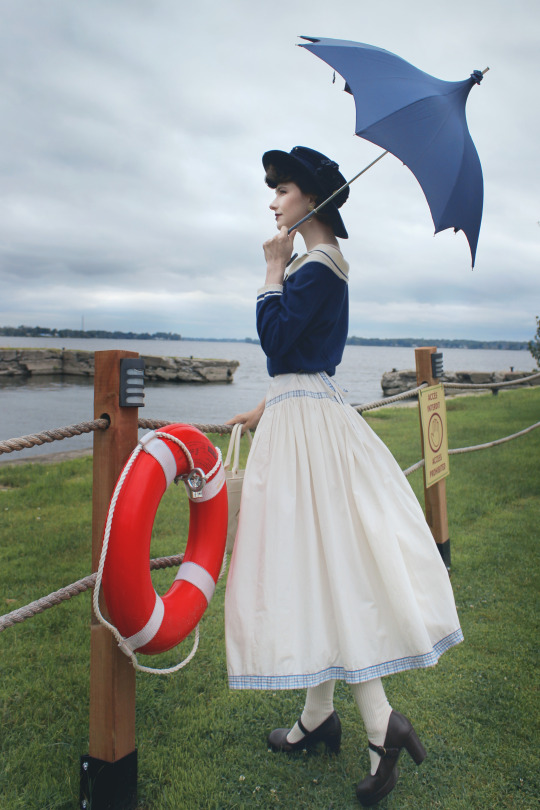

What do you mean, "I am overdressed for the beach"?
Today's little local history lesson that you won't find on any of the Village des écluses or Pointe-des-Cascades websites:
From 1900 to 1959, the Soulanges canal was where most boats would pass through to navigate the Saint-Laurent river in the area South-West of Montreal. At Pointe-des-Cascades, right next to the canal, there was an industrial site where all the maintenance materials for the canal were being built and stored, but when the canal closed in 1959, that site was left abandoned. In 1986, the site got revived, and the industrial buildings were repurposed as a summer theatre, restaurant and boutiques, and the riverside, as a small beach. However, the site was abandoned once again in the late 2010s, only to be picked up again by a new team wanting to restore the 80s resort it once was.
So, how is my 1980's does 1910's nautical outfit? I have also added a picture of my brother and I on that day, two pictures at Ste-Anne-de-Bellevue at sunset (with my sister and a different hat) and a picture of the abandoned "Hotel" (which was never a hotel) at Village des écluses, taken in April, on my Instagram post.
Outfit rundown
Skirt: vintage Pink House
Top: old Axes Femme
Hat: vintage
Shoes: old Queen Bee
Parasol/umbrella (served both purposes that day): Alice and the Pirates
Navy cat stamp brooch: Via Carousel
All other jewellery: vintage
#fashion#vintage#vintage style#vintage fashion#vintage aesthetic#80s fashion#historybounding#pink house#jfashion#retro fashion#retro style#historical fashion#historical facts#long hairstyles#axes femme#sailor style#marine style#edwardian fashion#fanny rosie#fannyrosie
670 notes
·
View notes
Text
NSFW Hogwarts in the 1890s Headcanons
Convenient Plot Devices
(to make my smut more believable)
(aka Nurse Blainey is a very supportive and progressive witch doctor!)

Every girl over the age of 15 (sometimes earlier) is required to take contraceptive potions as per request by Nurse Blainey who had to deal with horny teenagers and their lack of mind for consequences for too long.
Boys don't have to take them, but can if they are so inclined.
Very reluctantly, the recipe for that potion is taught by Professor Sharp in the Sixth-years' Potions class.
There are potions for every ailment (usually provided by Nurse Blainey), including aftermath soreness or the "potion after" if a witch/wizard forgot to take their contraceptive potion.
There were indeed condoms*, but not every wizard carried them, so the potions and/or a quick disappearing spell had to be used to prevent pregnancies.
*Condoms were usually distributed in barbershops in the late 19th/early 20th century (according to Wikipedia) so I imagine Madam Snelling selling them under the counter in her hair salon.
There is no sex-ed class in Hogwarts, but again, Nurse Blainey is the first to hand out informative literature* or reading recommendations.
The Restricted Section of the library has an entire room filled with erotic fiction, anatomical books and various guides to help out the eager witch or wizard.
*Informative literature included tips and guides for the uterus-bearing population on how to deal with bleeding. As early as 1890, probably even earlier, there was the "invention" of pad-belts/sanitary belts in Victorian England, those were re-usable and I can imagine even easier to use for witches because instead of cleaning them the old-fashioned way, they could just clean them with a swish of their wand. (Read more on the history of menstrual pads here if you're interested.)
Ignatia Wildsmith has seen more horny teenagers making out in front of her Floo flames than people actually using that way of travel.
Ghosts see a lot of things and mostly they don't care about it, unless they are Richard Jackdaw* who likes to stalk those horny teenagers more often than is appropriate.
*Shameless plug: I wrote a smut piece about our favorite horny ghost called The Horny Ghost (how creative).
"Silencio" is the most used spell in the dormitories, boys' and girls' alike.
Hufflepuffs are the only ones who don't have curtains around their beds! But I bet they can think of other devices to get some privacy. Maybe they're masters of the Disillusionment charm!
On that note: only Ravenclaws have their own in-house bathrooms - with actual bathtubs! Slytherins have to leave their common room, and Gryffindors and Hufflepuffs have to walk quite a while to find the nearest bathroom.
[Correction: there are bathrooms, one with stalls, one with stalls and bathtubs, in the Gryffindor common room, but only on the girls' side! (Thanks to @mianeryh for pointing that out!)]
But this is a post about HCs, not actual fact/pointing out lazy game design, so I'd like to imagine that all houses have at least one communal bath/bathroom area very close to their dormitories.
*By the way: In the Slytherin, Gryffindor and Hufflepuff common rooms, the girls' dormitories are upstairs, so they have the stairs turning into slides whenever a boy tries to access them, whereas in the Ravenclaw common room, the girls have to go down the stairs and are "only" protected by two suits of armor guarding the way, which in turn makes it easier to sneak past!
Popular make-out places are: the boat-house, the underground harbor, the loft above the Great Hall, the kitchens (poor house-elves), the Prefects' bathroom, the Restricted Section of the library, any dark empty hallway, any empty classroom/storage room, the Undercroft and the Room of Requirement (if they know of them), ...
*Honestly: anywhere is possible in the large castle that is Hogwarts!
Let's talk fashion: we've all seen the HL undergarments of girls and boys, right? Here is an amazing guide by @tamayula-hl about period accurate clothing and their uses in smut writing, very informative!
So based on that I also believe that horny teenagers got tired of all those buttons and layers very quickly and learned spells to make the undressing easier, and/or used "Evanesco" to get rid of clothes entirely (and conjured them back afterwards) - though tbh, I, as a smut writer, don't care too much about how they get naked. They're wizards/witches, they have their ways!
My most used clothing device apart from simple spells: the convenient flap at the front of boys' breeches.

FANFICTION MASTERLIST - KINKTOBER - AO3
#hogwarts legacy#hogwarts legacy headcanons#hogwarts legacy smut#smut headcanons#headcanons#historical facts#hogwarts in the 1890s
389 notes
·
View notes
Text
You want to know a LGBTQ+ historical fact that is not centered in the US?
In 2018 the Federal Psychology Council in Brazil stopped classifying being trans as a disorder and it became illegal to promote any type of conversion therapy to trans people.
725 notes
·
View notes
Text
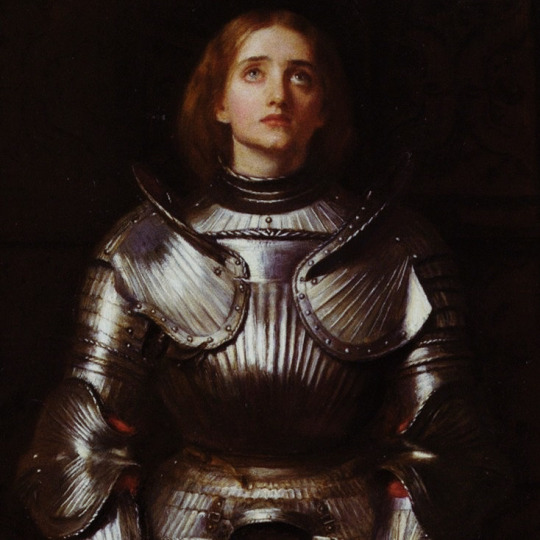







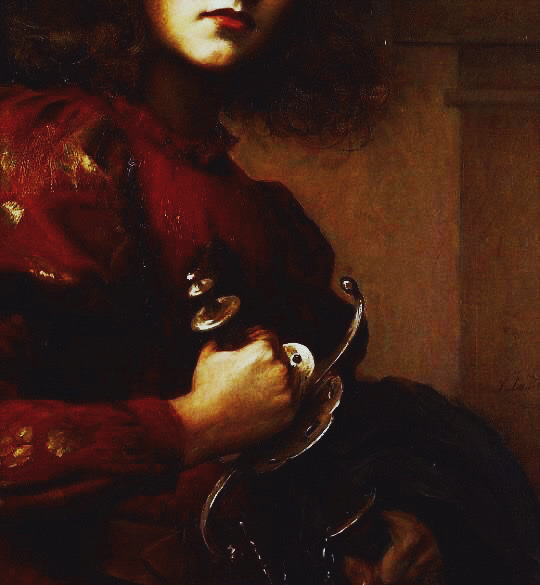
Antónia Rodrigues was arguably one of the most intriguing and significant in portuguese History, yet she remains largely unrecognised.
She was born on the 5th of january 1572, the daughter of Leonor Dias and Simão Rodrigues, and lived in the parish of Nossa Senhora da Apresentação, in Aveiro. Simão was a deep-sea fisherman, which meant he spent most of his time away from home and due to this and because of poverty, they decided to send Antónia to Lisbon, where her married sister lived.
Once in Lisbon, Antónia began to feel “more liberated” — partly because her sister was quite neglectful and careless in her upbringing, which instilled in Antónia a haughty character “unsuitable” for her age, and always refusing to do tasks deemed “appropriate for her gender”.
Until one day, she learned that a caravel named “Nossa Senhora do Socorro” was settling sail for Mazagan with a cargo of wheat. At the time, Antónia was 15 years old, yet in the eyes of the people, she was remarkably beautiful, elegant, with long black hair, dark eyes, a tanned complexion, and full lips. So, she decided to cut her hair and wear “masculine” clothes, adopted the name “António” and enlisted for the crew of the coveted caravel. The captain immediately noted how easily António climbed the masts, without fear of falling or being disturbed by the swaying of the storms.
After his martime adventure and upon reaching Mazagan, due to the merit and good reputation, he had gained throughout his adventure, António decided to enlist as a simple soldier in the portuguese troop and the troops’ governor immediately accepted. The moroccans attempted several times to regain Mazagan from the portuguese empire, and although they were always repelled, they never gave up trying. It was in one of these attempts that António, a young soldier, with his bravery, won the decisive battle, and from then on, he was regarded as a hero.
António began to be invited by wealthy and well-known families of the time to soirées, he engaged with ladies, dancing and drinking with them, having long conversations with many of them. With that, Rodrigues, to conceal his true identity, nurtured some of these relationships and many of them ended up falling in love with him. Among these ladies. Beatriz de Menezes, the daughter of a very influential nobleman, stands out. Beatriz was so in love with António that she became seriously ill with the fear of losing her beloved, prompting her father to compel António to ask for his daughter’s hand. However, the soldier had no choice but to reveal the whole truth about himself, including the fact that she came from a very poor and humble family.
The truth is Antónia suffered no punishment, and little is known about her life after this revelation, except that she eventually married an acquaintance from the portuguese troop, and together they had a son (whose identity remains unknown), she returned to Portugal and shortly afterward became a widow. King Filipe II of Portugal and III of Spain even granted her a great proze for her bravery in crossing the boundaries imposed by society.
Antónia Rodrigues passed away in 1641.
32 notes
·
View notes
Text
USAAF Flight Nurses
So as I’m currently collabing with @major-mads on a fic where our two ocs are flight nurses I thought I do a little post about them as they aren’t well know. I’ve also had a passion for ww2 nurses, including flight nurses and so I’ve really enjoyed sharing my flight nurse knowledge with Mads as we have written our fic. These woman were truly amazing, like many woman during ww2, so I thought I do a little factual post about them.

Before World War II, the U.S. military showed little interest in using aircraft and flight nurses to evacuate wounded soldiers to rear areas. However, the global war forced the US to revolutionise military medical care through the development of air evacuation, which was later known as aeromedical evacuation and flight nurses.
With the rapid expansion of USAAF air transport routes around the world it was made possible to fly wounded and sick servicemen quickly to hospitals far from the front lines. This helped save the lives of many wounded men, and the introduction of flight nurses helped make it possible.
Due to a pressing need for this service, the USAAF created medical air evacuation squadrons and started a rush training program for flight surgeons, medics and flight nurses at Bowman Field, near Louisville, Kentucky.
The increasing need for flight nurses became critical after the Allied invasion of North Africa in November 1942, however many of the nurses at Bowman Field had not finished their training. Nevertheless, the USAAF sent these nurses to North Africa on Christmas Day.
On Feb. 18, 1943, the U.S. Army Nurse Corps' first class of flight nurses formally graduated at Bowman Field.
Due to the C47s used as air evacuation also transported military supplies, they could not display the Red Cross. This meant that without any markings to indicate their non-combat status, these evacuation flights were vulnerable to enemy attacks. For this reason, flight nurses and medical technicians were volunteers.
To prepare for any emergency, flight nurses learned crash procedures, received survival training, and studied the effects of high altitude on various types of patients. They also had to be in top physical condition to care for patients during these rigorous flights.
Eventually, about 500 Army nurses served as members of 31 medical air evacuation transport squadrons operating worldwide. It is a tribute to their skill that of the 1,176,048 patients air evacuated throughout the war, only 46 died en route. Seventeen flight nurses lost their lives during the war.
The Flight Nurses Creed
I will summon every resource to prevent the triumph of death over life. I will stand guard over the medicines and equipment entrusted to my care and ensure their proper use. I will be untiring in the performances of my duties and I will remember that, upon my disposition and spirit, will in large measure depend the morale of my patients. I will be faithful to my training and to the wisdom handed down to me by those who have gone before me.I have taken a nurse's oath, reverent in man's mind because of the spirit and work of its creator, Florence Nightingale. She, I remember, was called the "Lady with the Lamp." It is now my privilege to lift this lamp of hope and faith and courage in my profession to heights not known by her in her time. Together with the help of flight surgeons and surgical technicians, I can set the very skies ablaze with life and promise for the sick, injured, and wounded who are my sacred charges. ...This I will do. I will not falter in war or in peace.

Here are a few of the real flight nurses from ww2 from left upper: Second Lieutenant Elsie S. Ott, upper right: first Lieutenant Suella Bernard.

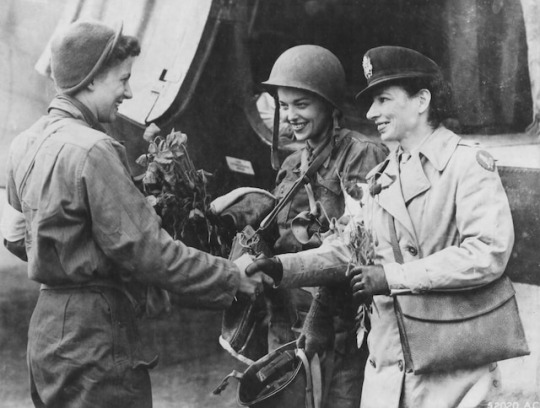
Elsie S. Ott - As the flight nurse on the first intercontinental air evacuation flight, she demonstrated the potential of air evacuation in January 1943. She was an Army nurse who had never flown in an airplane and had no air evacuation training, she successfully oversaw the movement of five seriously ill patients from India to Washington, D.C. This six-day trip would have normally taken three months by ship and ground transportation. For her actions on this historic flight, Ott received the first Air Medal presented to a woman, and she also received formal flight nurse training.
Suella Bernard - On March 22, 1945, two CG-4A gliders landed in a clearing near the bridgehead at Remagen, Germany, to evacuate 25 severely injured American and German casualties. Once the gliders were loaded, C-47 transports successfully snatched them from their landing site and towed them to a military hospital in France. In the second glider, Suella who had volunteered for the mission, cared for the wounded en route. One of the first two nurses to fly into Normandy after the D-Day invasion, Bernard became the only nurse known to have participated in a glider combat mission during World War II. For this mission, she received the Air Medal.
Upper left: first Lieutenant Aleda E.Lutz Upper right: first Lieutenant Mary L. Hawkins


Aleda E. Lutz - One of the most celebrated flight nurses of World War II, she flew 196 missions and evacuated over 3,500 men. In November 1944, during an evacuation flight from the front lines near Lyon, France, her C-47 crashed killing all aboard. Aleda was awarded the Air Medal with four Oak Leaf Clusters, and the Distinguished Flying Cross.
Mary L. Hawkins - On Sept. 24, 1944, she was evacuating 24 patients from the fighting at Palau to Guadalcanal when the C-47 ran low on fuel. The pilot made a forced landing in a small clearing on Bellona Island. During the landing, a propeller tore through the fuselage and severed the trachea of one patient. Hawkins made a suction tube from various items including the inflation tube from a "Mae West." With this, she kept the man's throat clear of blood until aid arrived 19 hours later. All of her patients survived. For her actions, Hawkins received the Distinguished Flying Cross.

I hope you’ve all found this interesting and now have a greater understanding of flight nurses. If you’d like to read a fic on flight nurses please check out my fic ‘On a Wing and a Prayer’ and @major-mads fic ‘A Pair of Silver Wings’ a Masters of the Air collab.

42 notes
·
View notes
Text

#meme#memes#shitpost#shitposting#humor#funny#lol#satire#funny memes#funny humor#funny meme#comedy#i'm still atheist however#latam#britain#france#spain#portugal#historical facts#facts#fact#irony#joke#parody#spanishness#hispanidad
34 notes
·
View notes
Text

#first nations#native american#historical facts#genocide#ethnic cleansing#usa#eugenics#american history#usa history#colonization#usa is the native american country#history of christian people#white people
42 notes
·
View notes
Text

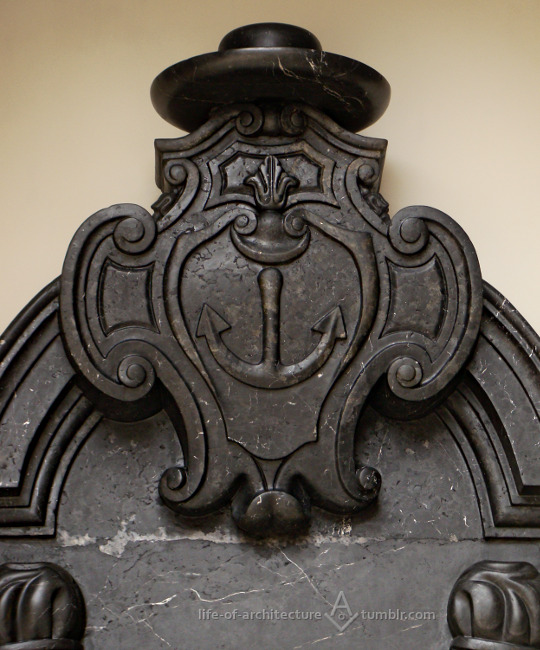
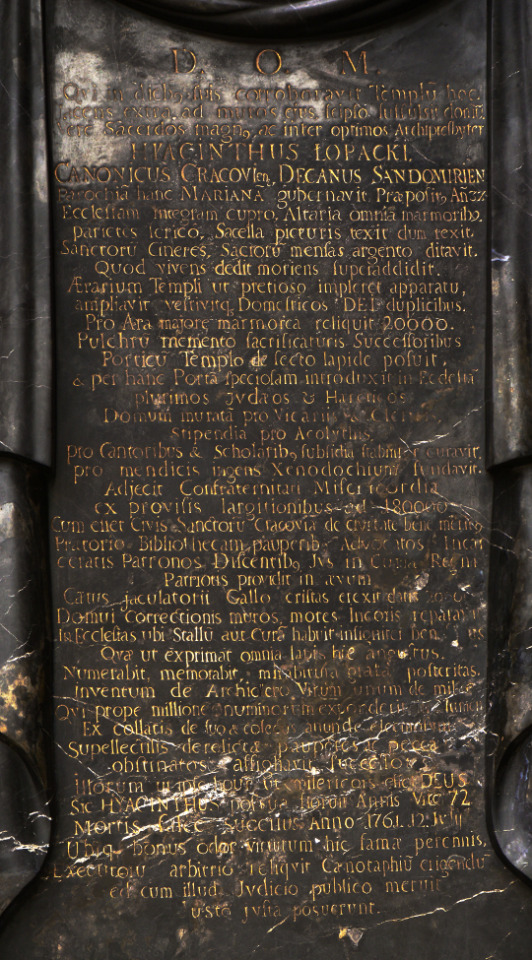

Kraków
Kościół Wniebowzięcia Najświętszej Marii Panny czyli Bazylika Mariacka
foto z 18 grudnia 2019 i 15 lipca 2020
Wysokie na ponad cztery metry epitafium z czarnego marmuru dębnickiego, projektu Franciszka Placidiego, poświęcone dwudziestemu czwartemu archiprezbiterowi parafii mariackiej. Jacek Augustyn Łopacki herbu Kotwica (1690-1761) był doktorem filozofii i medycyny oraz fundatorem licznych przedsięwzięć charytatywnych i artystycznych. W młodości osobisty medyk kardynała Conti zanim ten został papieżem Innocentym XIII, potem w Krakowie leczył na równi magnatów i robotników. Pochowano go w tym miejscu zgodnie z jego własnym życzeniem.
Pragnę i nieodmiennie naznaczam, aby ciało moje bez żadnej odwłoki, zaraz in crastino śmierci pogrzebione było przy kościele Najświętszej Panny Maryi w Krakowie na cmentarzu w ziemi w tyle ołtarza Crucifixi przy murze kościelnym.
fragment testamentu J.A. Łopackiego
Czemu się mam żalić, że chociaż dopiero przy zaczynających się żniwach, a już frumentum Electorum nieodżałowany Prałat grobowym na proch jest starty kamieniem, że usechł w oczach naszych tak ozdobny rozmaitym cnót Świętych kolorem, dosyć pięknego bo liliowej niewinności różowego wstydu, ten hiacyntowy kwiat flos decidit & decor.
fragment mowy Jana Kantego Laskiewicza na pogrzebie Łopackiego
rysunek Stanisława Cerchy z 1902 r.

akwarela Stanisława Fabijańskiego z 1917 r.
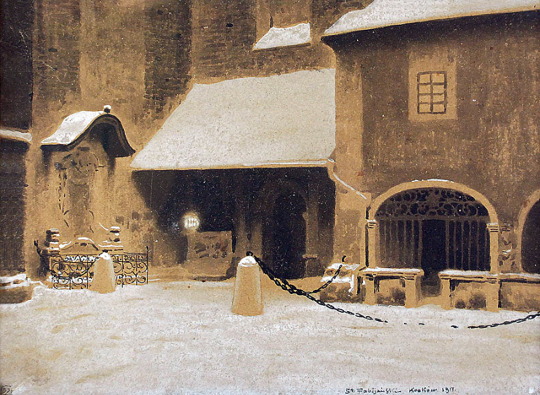
rysunek Leona Kowalskiego z 1924 r.

akwarela Stanisława Janowskiego sprzed 1942 r.
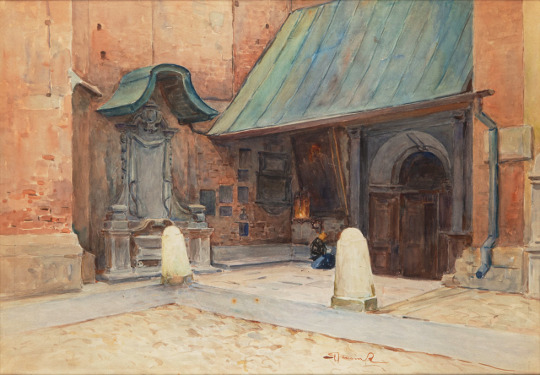
Zdzisław Gajda, historyk medycyny, przytacza anegdotę o Łopackim:
…były krakowskie odpusty u Panny Maryi okazją do swoistego widowiska: przychodziły tłumy opętanych, wzbudzając widokiem swych cierpień najwyższe politowanie, co równoznaczne było z rozsupływaniem mieszka. Otóż po głównych uroczystościach kościelnych wychodził archiprezbiter na plac przed kościołem w stroju pontyfikalnym, przed nim zbierała się gromada dręczonych przez złe duchy (…). Otóż Łopacki, jak to u dobrych lekarzy bywa, nie był w ciemię bity i miał dobry zmysł obserwacji, nie odmawiał tradycją przyjętego zwyczaju, ale podejrzenie miał. I pewnego dnia się przejadło. Wyszedł jak zwykle, modły odmówił, kropidło wziął, opętanych pokropił, a gdy spodziewanego skutku wszyscy się dopatrzyli, rzekł: A oszuści, a nicponie! A udawacze! Gdybyście byli prawdziwie opętani, nic by wam nie dało to moje kropienie, bom zwykłej, a nie święconej wody na was użył!
fragmenty dyplomu doktora medycyny Jacka Łopackiego wydanego przez Uniwersytet w Padwie w 1711 r.

portret Iacentego (Jacka) Łopackiego w siedzibie Arcybractwa Miłosierdzia, mniej niż 100 metrów od jego grobu
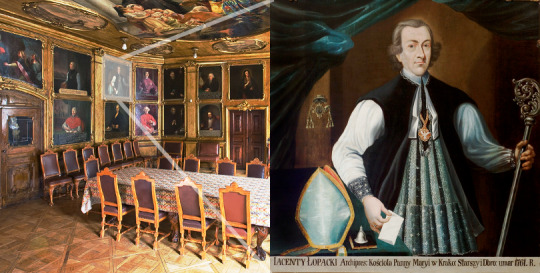
<><><><><><><><><><><><><><><
Kraków, Poland
Saint Mary's Basilica
taken on 18 December 2019 and 15 July 2020
Over four meters (14 ft) tall epitaph made of black marble, designed by Francesco Placidi, marking the grave of Jacek Augustyn Łopacki (1690-1761) of the Kotwica coat of arms, the 24th Arch-Priest of the St. Mary's parish, and also Doctor of Medicine and Philosophy, a philanthropist and art patron. In his younger years he was the personal physician of Cardinal Michelangelo dei Conti before the latter became Pope Innocent XIII; later in Kraków he kept treating magnates as well as laborers. He was buried on this site in accordance with his own wish.
I want and consistently make a disposition for that my body, with no delay [and] just in crastino of death, shall have buried in the cemetery next to St. Mary's Church in Kraków, in the ground behind the Crucifixi altar next to the church's wall.
excerpt from J.A. Łopacki's last will
Why should I complain that though the harvest time has barely started, frumentum Electorum lamented Prelate already is ground by tombstone into dust, that a Hyacinth flower, so adorned with the color of various Holy virtues [that is] quite beautiful lily-rose innocent modesty, already wilted before our eyes, flos decidit & decor.
excerpt from the speech of Jan Kanty Laskiewicz at Łopacki's funeral
[drawing by Stanisław Cercha, 1902]
[watercolor by Stanisław Fabijański, 1917]
[drawing by Leon Kowalski, 1924]
[watercolor by Stanisław Janowski, before 1942]
Zdzisław Gajda, historian of medicine, recounts an anecdote about Łopacki:
…parish festivals at St Mary's used to be an occasion for a peculiar spectacle: crowds of possessed came arousing pity with the sight of their suffering, which resulted in loosening the purse strings. After the main celebration the Arch-Priest used to come out wearing the pontifical vestments to the square in front of the church and before him gathered a huddle of those tormented by evil spirits … Łopacki, as good doctors are, was no fool and had good observation skills, hence while not denying the tradition, he had his suspicions. And some day he had enough. He came out as usual, said the prayers, took the aspergillum, sprinkled the possessed, and as soon as everybody saw the expected result, he exclaimed: Ah, you frauds! Scallywags and impostors! If you were truly possessed, my sprinkling would help you nothing, as I have used ordinary, not holy water on you!
[pieces of Doctor of Medicine diploma of Jacek Łopacki issued by the University of Padua in 1711]
[portrait of Hiacynt (Jacek) Łopacki in the premises of the Archbrotherhood of Mercy, less than 100 m (90 yd) from his grave]
#dark academia#Baroque#historical facts#anecdotes#tombstones#tombs#graves#historical figures#photographers on tumblr#original photography#Poland#Polska#Kraków#Krakow#marble#catholicism#medicine doctors#priests#memorials#monuments
44 notes
·
View notes
Text
Some wholesome history facts.
Generally, history tends to be interesting, funny, gross, sad, and quite horrific. Wholesome bits are usually either not the full story or a lie. However, there are always diamonds in the rough.
-During the Austro-Prussian war in 1866, Liechtenstein sent out 80 men to fight. They came back with 81. It’s nice when you bring back a friend, isn’t it?
-Alexander the Great once said his childhood friend Hephaestion was more or less equal to him. Of course, that didn’t stop him from quietly doing away with and just straight-up murdering in public his other friends, but ah well.
-Michael Jackson once searched the world for a liver to save a kid’s life.
-Genghis Khan (or Chinghis Khan as he called himself) was more loyal to his wife than many people who are worshipped as ‘heroes’. He also raised her possible illegitimate son as his own.
-When Rome and Greece were at war, this Royal Doctor offered to poison the Greek Kings (too lazy to look up names). Instead of accepting, the Romans warned the Greek King and as thanks he released all the Roman Prisoners.
-During the Irish Potato famine, the Chochtaw tribe, despite being far from well of themselves, raised 200 dollars, a hefty sum in those days.
-George Washington once stopped a battle to return a dog belonging to the enemy,
Whatever you think of the historical figures I’ve talked about, you can’t deny these are pretty wholesome.
23 notes
·
View notes
Text
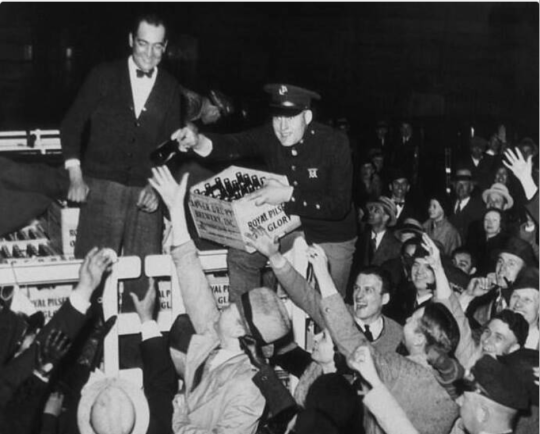
Late on the night of April 6, 1933, a crowd of 25,000 people gathered in front of the Anheuser-Busch brewery in St. Louis. President Franklin Delano Roosevelt had just signed the Cullen-Harrison Act allowing the sale of low-alcohol beer as a stepping stone toward the full repeal of Prohibition. And at midnight, everyone in that St. Louis crowd could take their first legal sip of beer in 13 years.
When the clock chimed, the crowd erupted and rushed inside — then drank the whole brewery dry by noon that day. And within months, the full repeal of Prohibition would be complete, sparking similar revelry in cities across America in what was perhaps the biggest impromptu party in U.S. history. Click the link in our profile to see more photos of the end of prohibition.
21 notes
·
View notes
Text

On an August day (see HERE the outfit post), I discovered the Montreal melon during my visit of the Lachine museum, and it became an obsession for the few following days. In the early 20th century, a special kind of melon, called the Montreal melon, was being grown by the Decarie family around the area where the Decarie highway is currently situated. It was a melon really hard to grow and costed a fortune (similarly to those fancy melons in Japan). People from around Canada and the US would import it for its surprising spiced tasted and status symbol. Sadly, due to the urbanisation of Montreal, the difficulty of cultivation and the arrivals of other cheaper imported melons, the Montreal melon almost completely disappeared.
Up until in the 90s, when a man from l'Île-Perrot found some Montreal melon seeds in the US, and revived it. However, it's still extremely rare, and I have yet to try it. Interestingly, during my researches, I discovered that the Île-Perrot cultivator was one of dad's old patients (!!!), so we went to visit him and his wife for more information. Sadly, he doesn't cultivate Montreal melons anymore because it's too much of a pain, but he has created hybrids. The only ones who are still trying to grow the Montreal melon are McGill university (we went to see them, and they told us the squirrels ate all their melons) and the Lachine museum (they had only one).
152 notes
·
View notes
Text
A fascinating fact about Sengoku warlords is that Date Masamune, the "One-Eyed Dragon of Oshu," was known for his unique helmet design featuring a crescent moon motif. This distinctive helmet not only served as a symbol of his individuality but also contributed to his intimidating presence on the battlefield during the Sengoku period.
11 notes
·
View notes
Text
You want to know a LGBTQ+ historical fact that is not centered in the US?
Homosexuality became legal in Brazil in 1830.
218 notes
·
View notes
Text
Did yall know that not even one of the founding fathers of america lived up to the point they started calling them "founding fathers". Now thats some legacy shit if I know it lol
(Legacy, what is a legacy? It's planting seeds in a garden you never get to see. I wrote some notes at the beginning of a song someone will sing for me. America, you great unfinished symphony)
#historic#historical facts#george washington#john adams#hamilton musical#hamilton#america#founding fathers#the hamilton heartburn is so bad wtf do I do#I'm down so bad I ask chatgbt questions about american history#i'm not even american#wtf am i doing#I don't have to know any of this
13 notes
·
View notes
Text
4 portuguese monarchs who might had same-sex relationships:

1) Pedro I of of Portugal, certainly, one if the most renowned portuguese monarchs, largely due to the saga of “love and passion” with Inês de Castro. Yet, it was common knowledge that she was the the Pedro’s only love: he harboured a passion for his squire, Afonso Moreira, a relationship that ended as disastrously as his other romantic (or not) entanglements. On one fateful occasion, Afonso was caught in bed with Catarina Tosse, wife of Lourenço Gonçalves, who was an esteemed magistrate.
Throughout his reign, Pedro earned the epithet “the Cruel” for his ruthless administration of justice, whereby transgressions of any magnitude often resulted in swift execution. Pedro’s decision to order Afonso’s castration as punishment for his adultery starkly manifested his merciless ethos. Nevertheless, according to Fernão Lopes, a chronicler of portuguese court at the time, in chapter VIII of “Crônica de el-rei D. Pedro I”, his harshness stemmed from a surge of jealousy on the king’s part upon discovering his beloved squire’s relationship with a woman.

2) Prince Henry, revered as “the Navigator”, occupies a central role particularly during the epoch of maritime exploration.
He was hailed as “chaste prince”, having never entered into wedlock, with no historical accounts suggesting (with certainty) any relationships with women. In the annals of 1444, Henry experienced the loss of a “dear friend” in Ceuta, a tragedy that pluged him into 3 months of profound mourning. Both his father, King John I, and his brother, King Edward, counselled him to “rein in his emotions, lest he indulge men beyond what virtue dictates.”
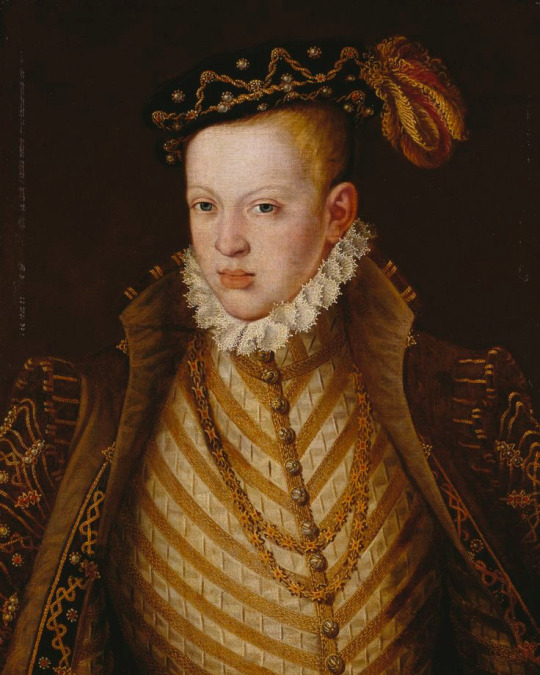
3) King Sebastian contracted gonorrhoea at the age 10/11, a malady documented in medical records at the time that rendered him sexually impotent. Some historians posit that this affliction may have dissuaded Sebastian from pursuing matrimonial unions or romantic relationships with women.
Even though, the “Crônicas de el-rei D. Sebastião” by Friar Bernardo da Cruz recounts an incident during a hunt in the Alentejo, where the entourage of nobles accompanying King Sebastian were stirred by a commotion. Investigating the disturbance, they stumbled upon the monarch locked in an embrance with a fugitive slave amidst the woodland.

4) King Afonso VI, sibling to Queen Catarina of Braganza, earned a reputation for rebeliouness and unruliness from a tender age, yet he harboured no ambitions for kingship.
His reign , marred by a series of missteps, was etched in history for its futile ventures. Despite grappling with severe health afflictions — such as partial paralysis stemming from hemiplegic fever, and scourge of bulimia — Afonso found solace in nocturnal escapades with his inner circle of friends. Among them was António Conti, an intalian peddler of opulent attire and accoutrements to Europe’s nobility. Conti’s sway in Afonso’s court burgeoned as he assumed the role of sartorial advisor and facilitator of introductions to foreign luminaries. Also, both grew increasingly closer to esch other, with Afonso avoiding royal gatherings to spend time with Conti, mostly in his chambers.
In 1666, Afonso took the hand of Maria Francisca Isabel of Savoy, yet their union was fleeting. Maria, citing non-consummation owing to Afonso’s hemiplegia, sought an annulment. In letters to his sister, he bemoaned Maria’s coercive measures, by which she compelled him into relationships with 14 courtesants in a bid to unearth the root of their marital discord.
Seeking to shield Afonso’s sovereignty and secure the portuguese lineage, Luisa de Gusmão, his mother, sanctioned the arrest and subsequent exile of Conti to the distant shores of Brazil.
#i am sorry for how long it is#but i really wanted to post it#so there you have#theres other monarchs to talk about#but these are the ones with the most evidences#pedro i of portugal#prince henry#king sebastian#afonso vi of portugal#historical facts#portugal
12 notes
·
View notes
Text
Pirate Radio is a such an interesting topic, not to mention Sealand which was basically “Raised on the Radio”
7 notes
·
View notes